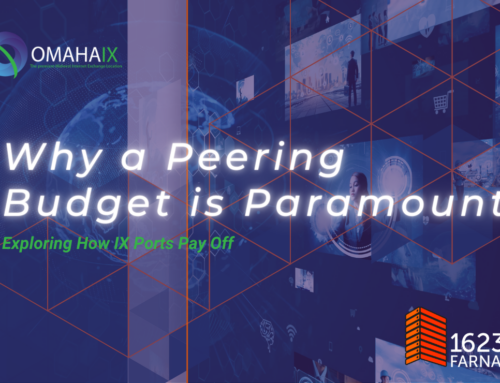When it comes to building out robust connectivity, the advantages of incorporating an IX-centric peering strategy are undeniable. When we keep in mind the latency, control, redundancy and cost benefits (just a few of the ways direct interconnection boosts businesses’ data mobility), it’s clear that the question is no longer whether to peer — it’s where to peer.
Choosing the right exchange point and provider can make a world of difference when empowering traffic flows. So, how should an enterprise navigate finding the best IX hub to launch (or improve) their peering framework based on individualized needs? Here are a few considerations to keep in mind if you’re looking to branch out and keep your connectivity moving at the speed of digital business:
Evaluating the Ecosystem
Peers at an IX are the bread and butter of any interconnection strategy. When it comes to choosing the location that suits you best, looking at what entities are available (and how they’re connecting) should be top of mind. There are a few different policy-based considerations that can come into play with peering, including the level of selectivity or restriction across available peers. This comes down to the number of prerequisites peers expect before agreeing to connect. Aspects like how members of an IX can connect might be tricky to assess, but tools like PeeringDB are available to help you compare and find out more about policies across assorted locations.
Above all, keep in mind that with an IX ecosystem, more is more. The greater the number of peers available, the more choice, redundancy and reach you’ll have. Plus, with more peers comes more desire from other entities to join in, which means you’ll be a part of a self-fueled growth trajectory that paves the way for even greater advantage in the future.
Omaha IX is a great example of how this momentum can get started. Established in January 2014, Omaha IX is situated in one of the fastest growing carrier hotels in the U.S., so you can rest assured you’re poised for success. You can find our list of participants here.
Partnership Matters in Peering
Every business is different — that means you need a partner that can help you get where you need to go with a strategy that works for you. Like any selection process for an IT partner, look for a trusted IX provider that is flexible and supportive as you get your peering up and running.
The need for a team that works with you is exactly why offer a range of options to connect to our IX (whether through long-range optics, rented space or ethernet) and an array of speeds that are only limited only by your connection. We offer 1G, 10G, 40G and 100G — and we don’t charge you for the amount of traffic, just for your connection.
We know peering is what a connected, digitally-focused business needs, so we make it as easy as possible for you to get the benefits you require.
Want to know more? For an in-depth look at how to select (and get started with) an IX partner, check out our helpful checklist.



